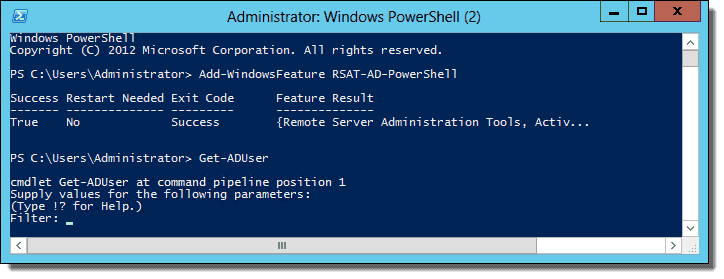I'm trying to install the active directory module of powershell on windows 10, through this group of commands provided by technet, but I still cannot succeed, I've tried many times and also running the powershell as administrator but the problem remains, it looks like it gets stuck inside a loop printing: '.' I downloaded the code from this link (It comes in a .txt file)
- Download Microsoft Active Directory Module For Windows Powershell
- Download Active Directory Module For Windows Powershell 1
- Download Active Directory Module For Windows Powershell 10
Sep 4, 2018 - If you aren't running Powershell 5 yet, go ahead and download it for your. There are 43 Active Directory Get cmdlets in the module, so as you.
- Now download the 32-bit or 64-bit version of the Windows Azure Active Directory Module for Windows PowerShell, as appropriate for you management device. Once downloaded, run the.
- Let's install the Windows Azure Active Directory Module for PowerShell: Download the 64-bit setup from http://go.microsoft.com/fwlink/p/?linkid=236297.
Also I'm attaching the code itself and a screenshot of my result after executing the code.
Basically the code provided creates a function called Install-ADModule and then invokes it:
Result after executing the function created:
Screenshot:
Note: The version of windows I have is: Windows 10 Home 64-bit (10.0, Build 17134)

I hope you guys could help me with this.Greetings!
1 Answer
Download Microsoft Active Directory Module For Windows Powershell
RSAT is not available on the ‘home’ versions of windows. I ran into a similar issue with hyper-v on windows 10 home, but it worked just fine after upgrading to windows 10 pro for a fee.
cet51cet51